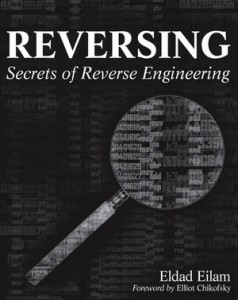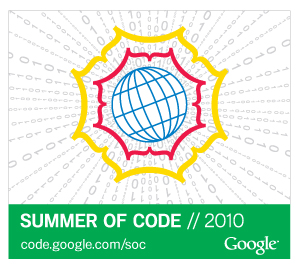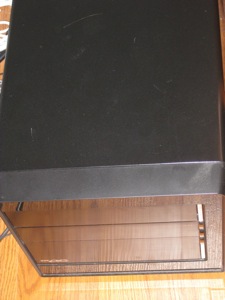I borrowed this book from a colleague since it covers half of the charter described at the top of this blog (“Topics on multimedia technology and reverse engineering”). It’s called Reversing: Secrets of Reverse Engineering by Eldad Eilam (Amazon also has a Kindle edition). Basically, if you have never reverse engineered anything from binary code before but are interested in coming up to speed rather quickly, drop the cash for this book and read it from cover to cover.

I’m feeling a bit sentimental this month since I distinctly recall it was 10 years ago, February 2000, that I developed this focus on multimedia. While I often explain that I just wanted to play QuickTime movie trailers on my Linux computer, here is when I got really interested: I had gone all-Linux, all the time at home by then. I downloaded a Real video file from the internet. I tried out Real’s Linux player. It was horrible. Forget about all the spyware/malware reputations of the Windows and Mac versions; this didn’t have any of that but couldn’t even keep basic A/V sync. Still looking to find my place in the world, deciding which niche I would try to fill, that’s when I wondered what it would really require to take apart such a file, decode the audio and video, and play them in sync. And that’s when I took up my hex editor and disassembler.
So multimedia was always the primary focus. RE was secondary; I didn’t really mean to learn so much about it but the study was necessary. Over the years, I have wanted to write down more of what I have learned and other ideas and experiments I have developed (one of my primary motivations for starting this blog, in fact).
How this all connects to the book is: This is the book I would have liked to write about RE. Frankly, the book didn’t really teach me anything new. It was a compendium of everything I’ve read, learned, and independently discovered over the past 10 years regarding RE. And that’s exactly why I think it’s such a valuable book. I’ve encountered no shortage of people who wish to learn these darks arts of binary RE. This book is a great starting point. It’s the book I wish I had started with 10 years ago (I see that it was first published 5 years ago, which still was too late for me).
One shortcoming I did observe during my skimming of the more than 500 pages is that the RE targets are mostly things like cryptographic algorithms, malware, copy protection, and DRM. My focus has always been to reverse engineer some rather large and tedious multimedia decompression algorithms. It’s a different domain with some different problems and assumptions.


